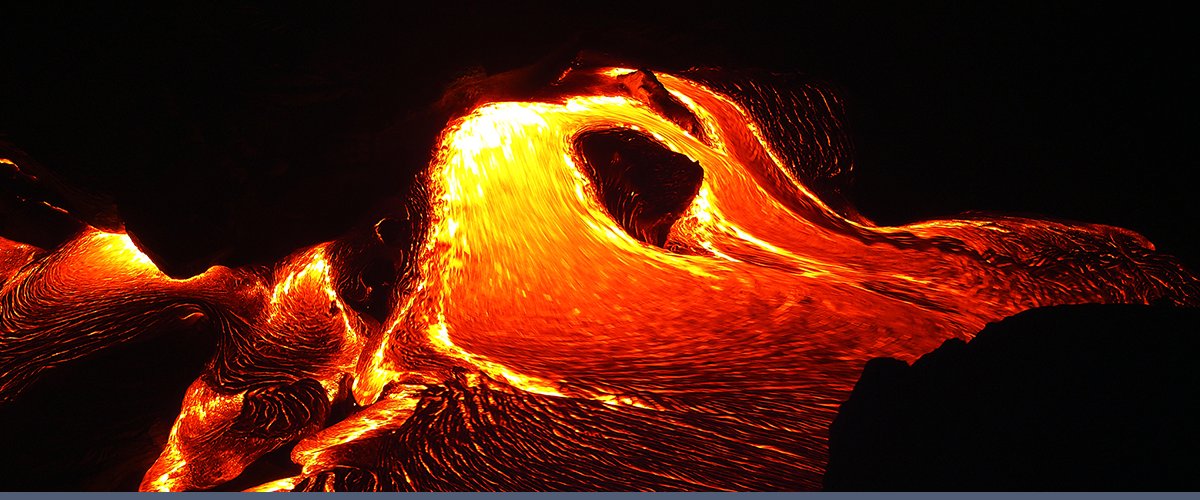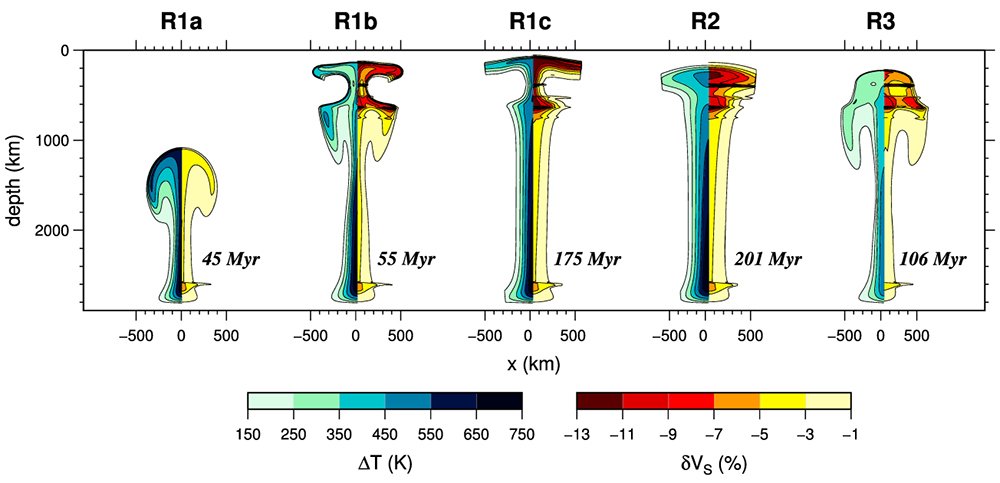Powering Discoveries
Beneath Hawaii's Volcanoes
Stampede1 enables improved deep Earth imaging of mantle plumes

Hawaii's volcanoes stand as silent sentinels. They guard the secret of how they formed, thousands of miles away from the edges of tectonic plates that clash and generate magma for most other volcanoes. Conclusive evidence remains elusive of what carries lava through the Earth's mantle to Hawaii's surface.
Scientists used the Stampede1 supercomputer at TACC to make the most detailed computational model yet of mantle plumes. They published their results in the American Geophysical Union's Journal of Geophysical Research, Solid Earth in January 2018.
Scientists hypothesize that mantle plumes, mushroom-shaped upwellings of hot rock from the deep Earth, caused Hawaii's volcanoes to form. The plumes are thought to originate at the base of the mantle and carry the heat from the Earth's core that generates a volcano's magma.

The international science team showed for the first time how plumes decelerate seismic waves and, consequently, how they appear in seismic tomographic images of the Earth's mantle. Seismic tomography uses seismic waves from earthquakes to create maps of Earth's subsurface. What's more, the researchers say their work could guide future experiments with deep Earth imaging on the ocean floor and help get to the bottom of the mystery of the origin of Hawaii's volcanoes.
"We used computer modeling to find optimal imaging scenarios, so that we can recover the most detail of mantle plumes at the lowest cost," said lead author Ross Maguire, formerly a PhD student who recently graduated from the department of Earth and Environmental Sciences at the University of Michigan.
The team explored various ways of using the reflections of seismic waves to image the Earth and did extensive tests to figure out the optimal configurations for seismometers at the surface to see plumes.
The effort is particularly important for Hawaii, said study co-author Jeroen Ritsema, a professor of Earth and Environmental Science at the University of Michigan. "We believe there is a plume responsible for volcanism on the Hawaiian islands. We've determined what might be optimal offshore deployments on the seafloor that could lead to the best images of the deep mantle beneath Hawaii."
Maguire, Ritsema, and their colleagues' simulations on Stampede1 required 1.2 million computing hours — the equivalent of 136 years of computing with a single processor. Their research continues with the Stampede2 system.
"Understanding Earth dynamics is of fundamental importance because we all live here and are affected by what goes on beneath our feet," said Maguire. "The existence of mantle plumes and the role that they play in our planet is still a big question mark."

